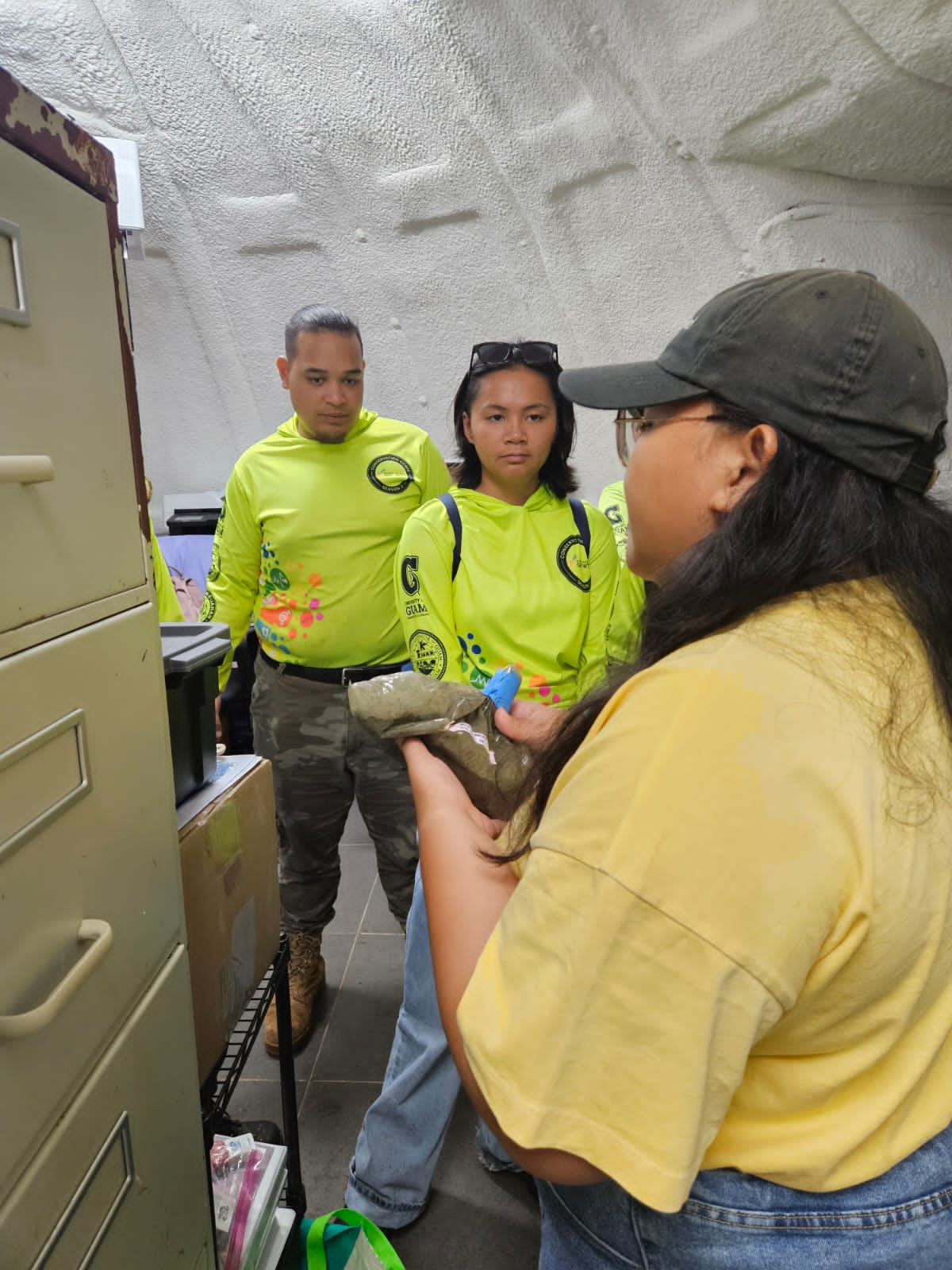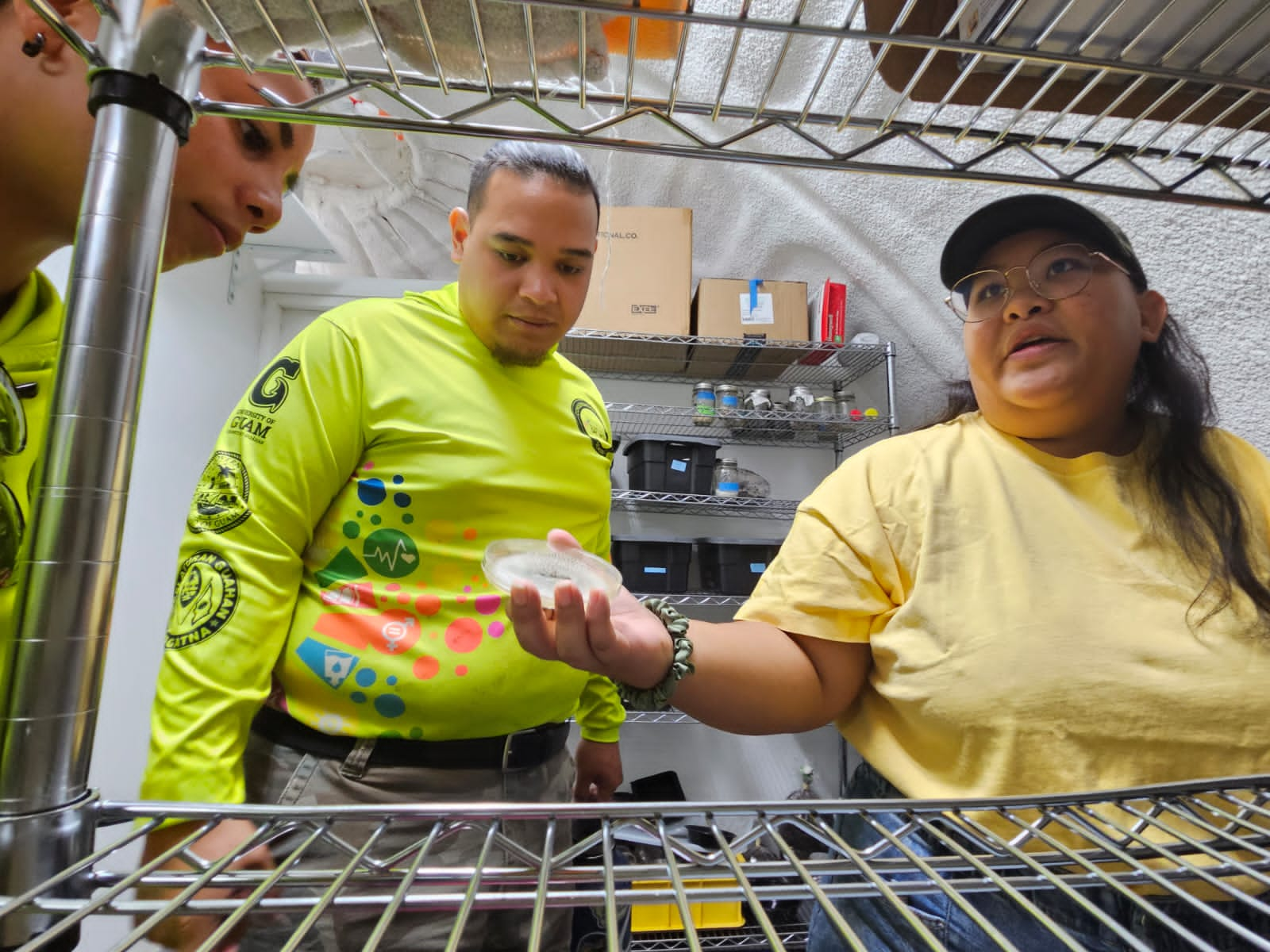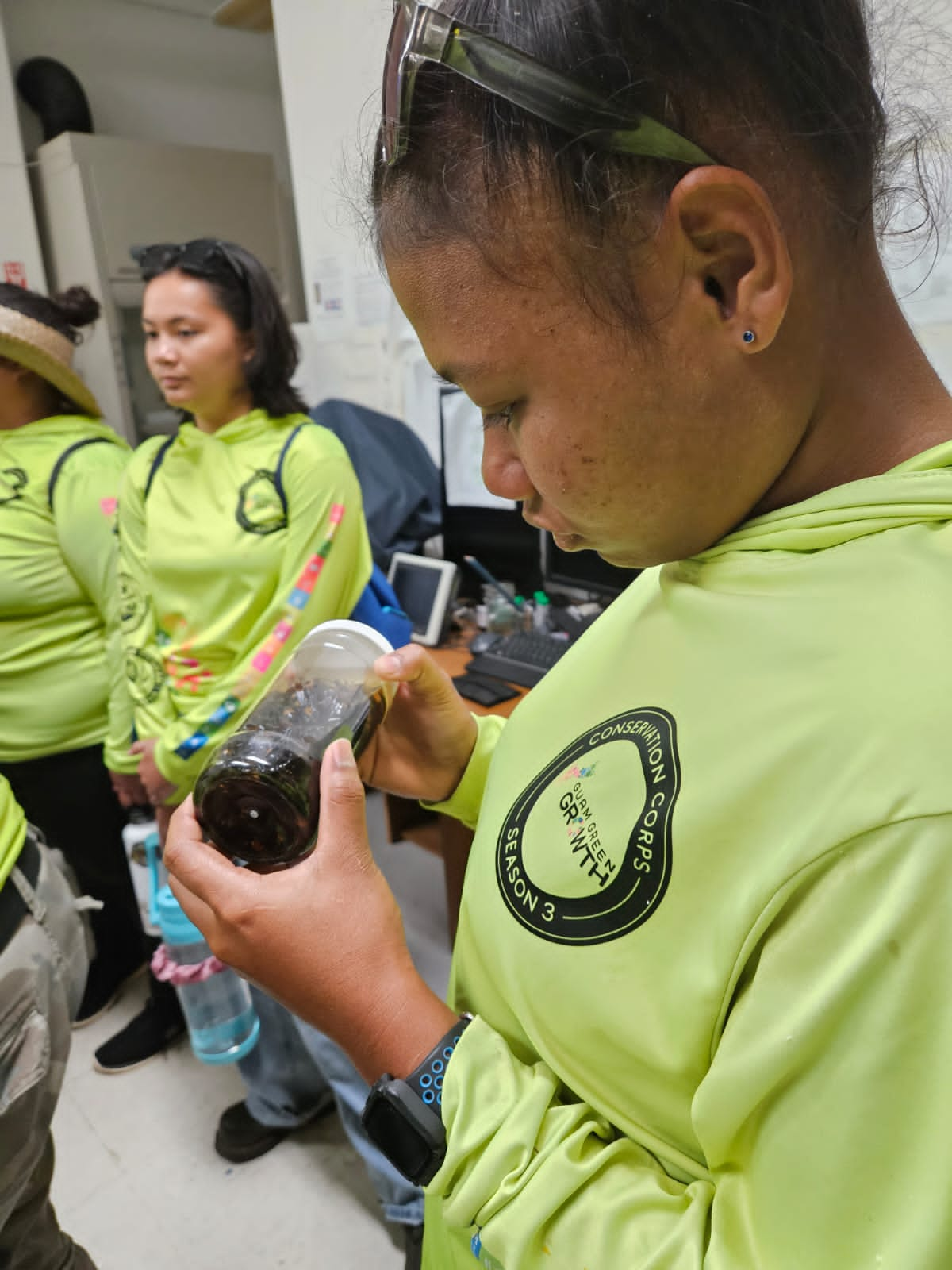Kyle Mandapat

The Guam Green Growth (G3) initiative at the University of Guam celebrated the graduation of its third conservation corps cohort on Friday, August 11, at the Sinajana Community Arts Hall.
The innovative workforce development program is designed to prepare the island for the emerging green economy. Launched in collaboration with the UOG Center for Island Sustainability and UOG Global Learning and Engagement in 2021, the G3 Conservation Corps program is a full-time training experience spanning five months each year.
Participants received instruction on a wide range of sustainability topics, covering areas such as agriculture, aquaculture, island beautification, invasive species removal, reforestation, circular economy, ocean conservation, and renewable energy.
The latest batch of G3 Conservation Corps members who successfully completed the comprehensive program include Maria Balbin, Jace Blas, Zeriah Blas, Cassie Bordallo, Michael Herbert, Michael Jude Hernandez, Connor Law, Laura Layan, Javier Mercado, Ciara Taijeron, Michael Torres, and Elisa Rose Padilla.
“We’ve learned a lot here and from all of our partners,” said Balbin, who served as corps crew supervisor.
Also at the graduation, UOG President Anita Borja Enriquez hailed the graduates as conservation corps warriors. “You are a special group of conservation leaders. You represent us as ambassadors to our youth and to members of our community through your experiences…Congratulations! We look forward to seeing you do amazing things.”
Governor Lou Leon Guerrero also commended the graduates. “The 12 of you are very significant to the conservation of our island. You have gone through an experience that we will probably never go through,” she said.
Meanwhile, Austin Shelton, UOG Center for Island Sustainability and Sea Grant director, highlighted the unique experience of the third batch of conservation corps. He said the process prepared the corps for the environmental challenges that are occurring in the region and the rest of the world.
“This season was a little bit different. We had an unexpected typhoon, and we had to do things differently. You got on-the-job training for what is becoming the new reality. Climate change is here, and we are seeing an increasing frequency of storms and rising sea levels,” he said.
Shelton also mentioned the impactful multiplier effect generated by the G3 Conservation Corps program, especially in partnership development. For example, he said the program facilitated the establishment of the G3 Art Corps and the newly formed G3 Kupu Corps collaboration with Kupu, a Hawai’i’-based youth leadership development program, now providing eight additional year-long corps positions in Guam and CNMI.
He also underscored G3’s ongoing commitment to expand the movement. He said current efforts of the program attracted new federal funding, enabling the future development of G3 partnerships across Micronesia and the Pacific.









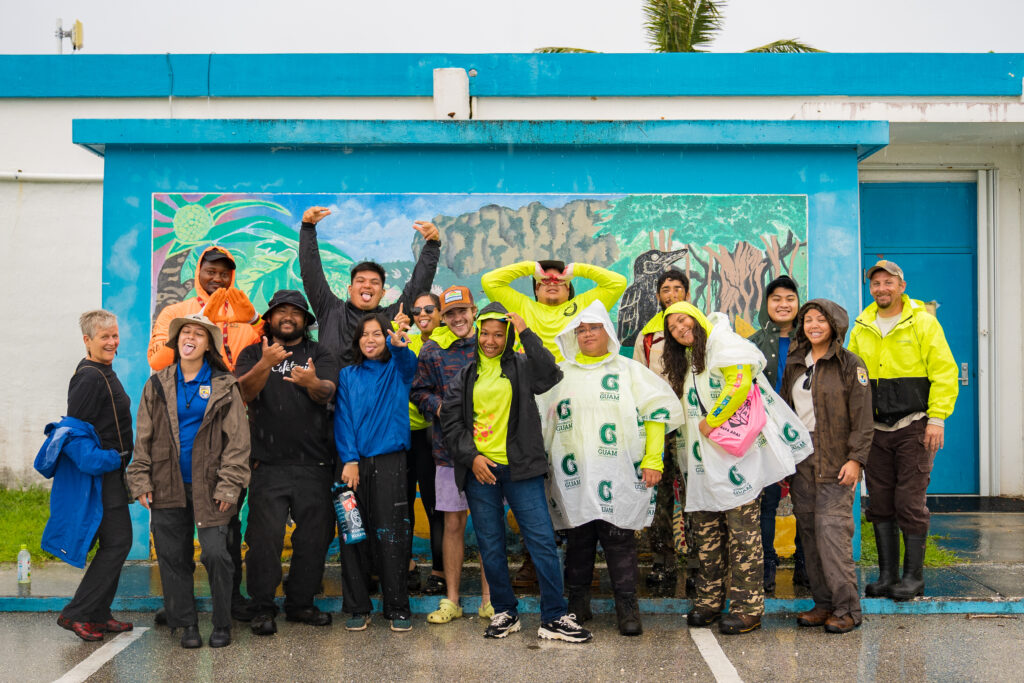


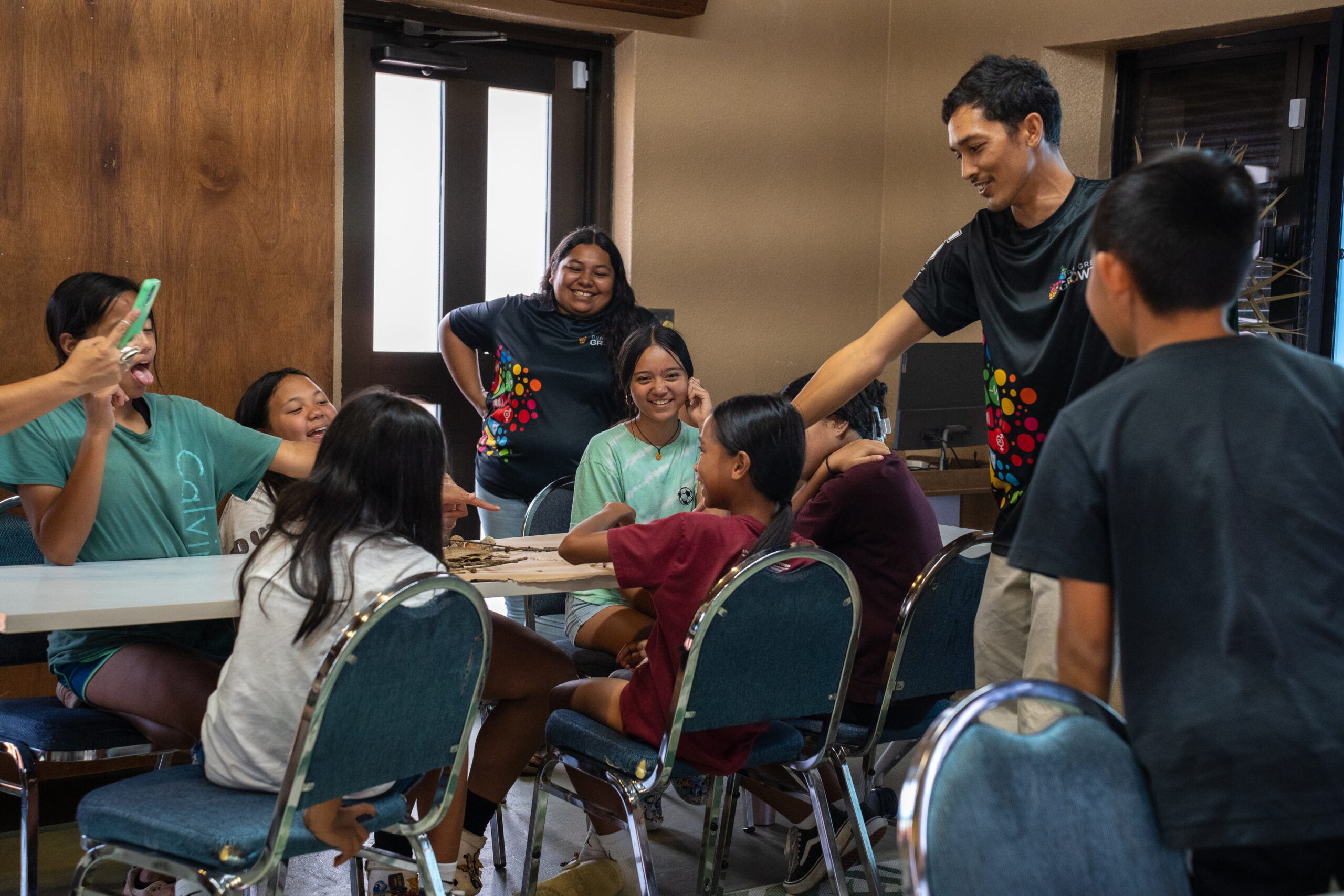
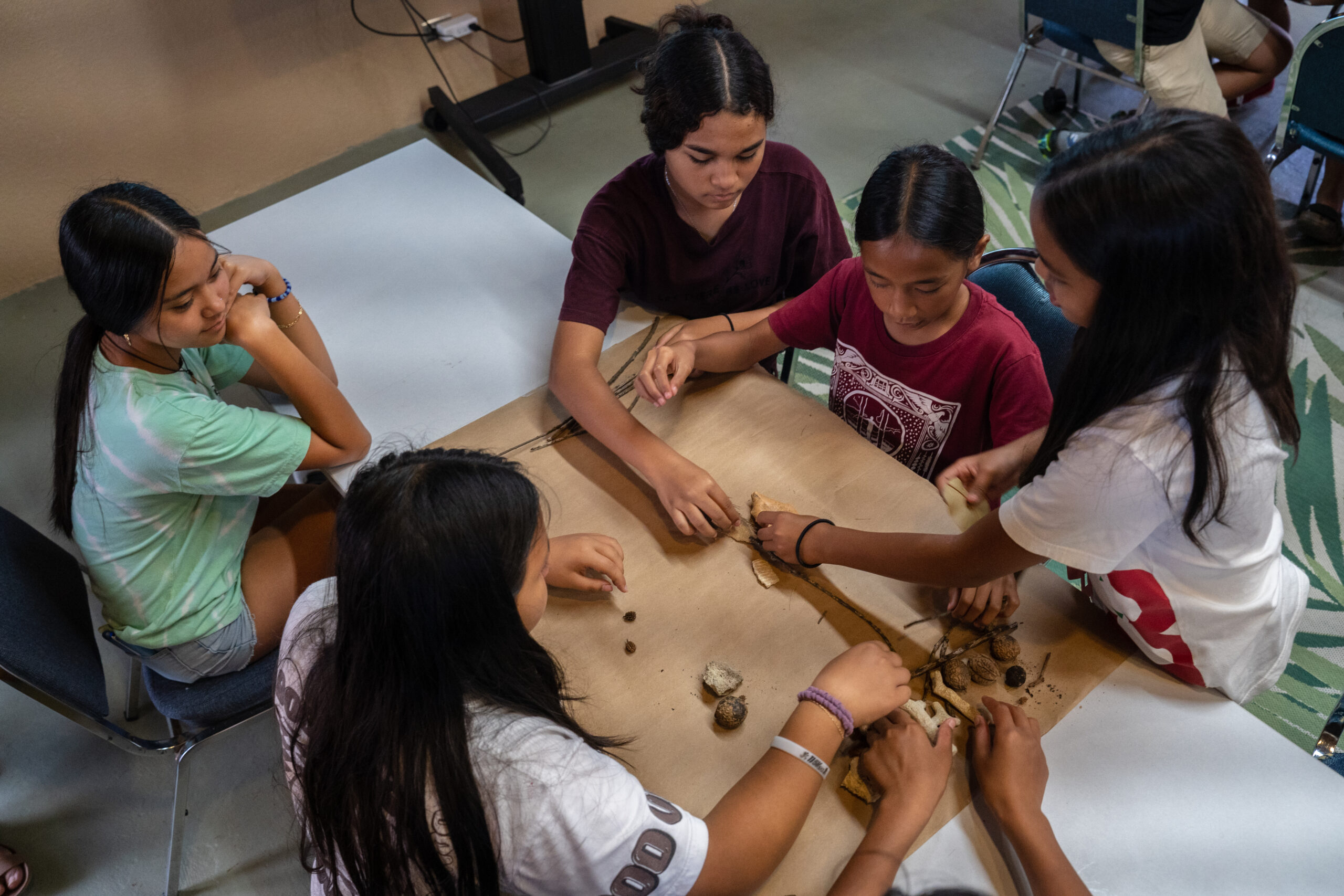
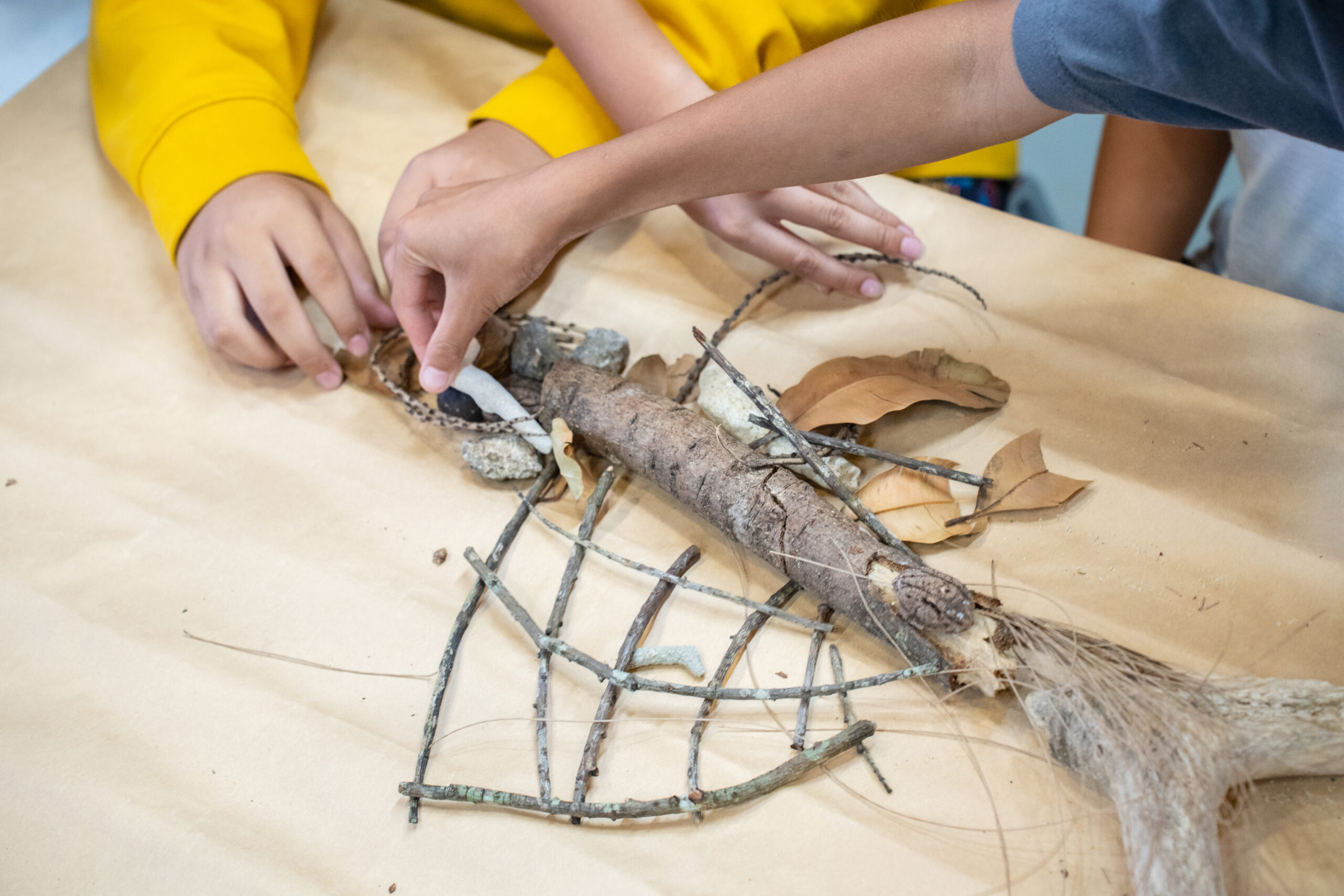



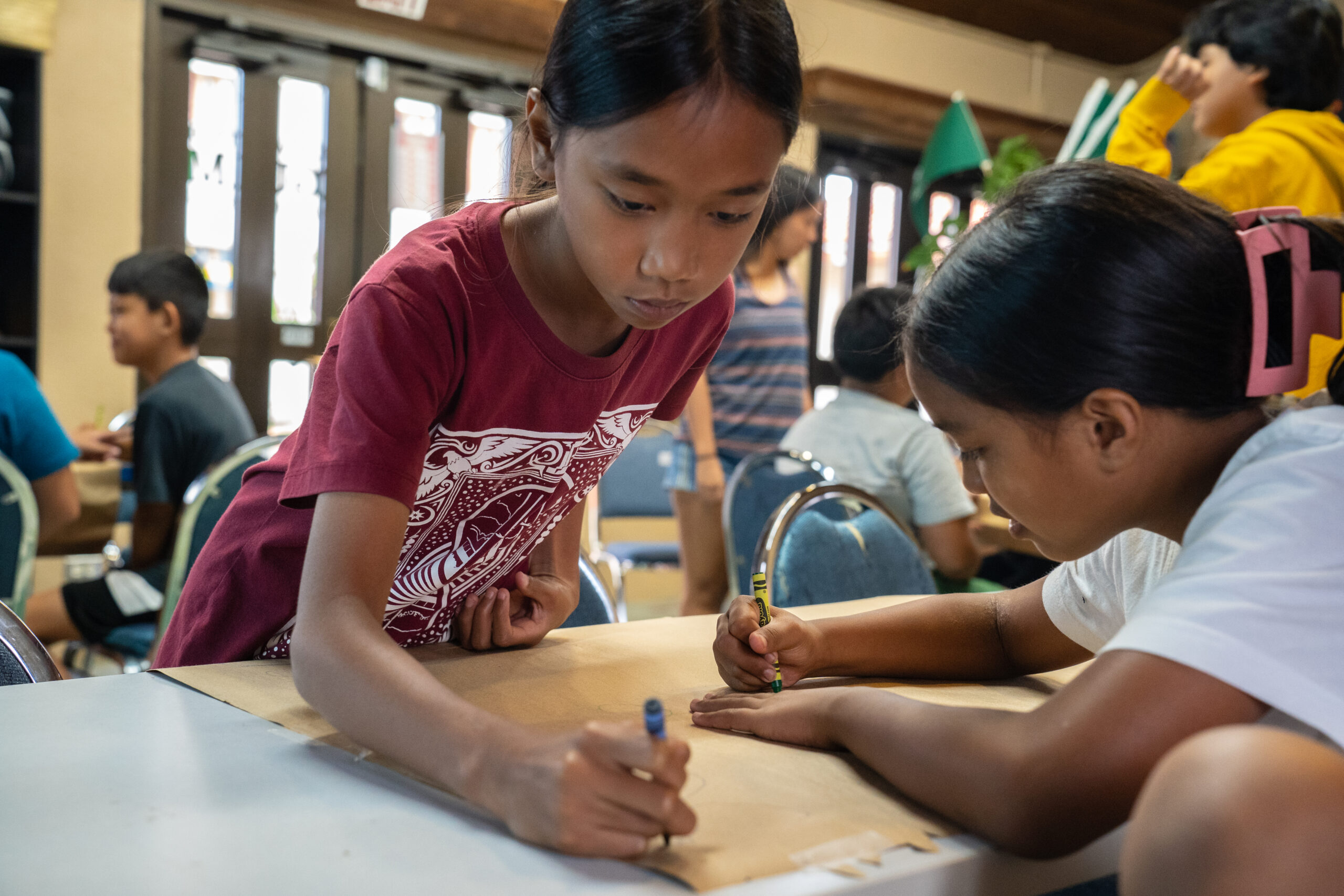















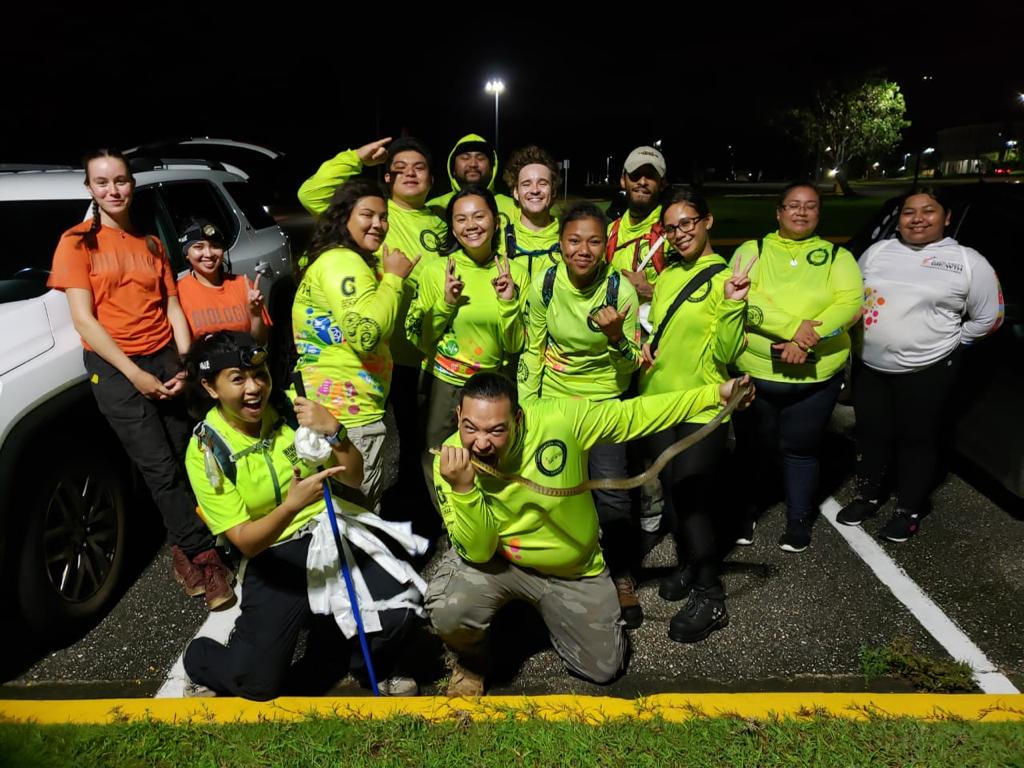

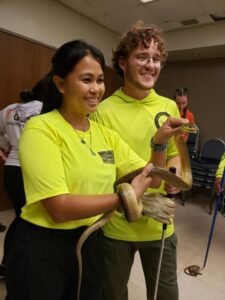 Divided into two groups, participants got hands-on experience in using a snake stick as well as how to safely pick up snakes in a controlled environment. It was difficult for the snakes to get traction on the shiny, waxed floors, but for some first-time wranglers it still was a challenge.
Divided into two groups, participants got hands-on experience in using a snake stick as well as how to safely pick up snakes in a controlled environment. It was difficult for the snakes to get traction on the shiny, waxed floors, but for some first-time wranglers it still was a challenge.

